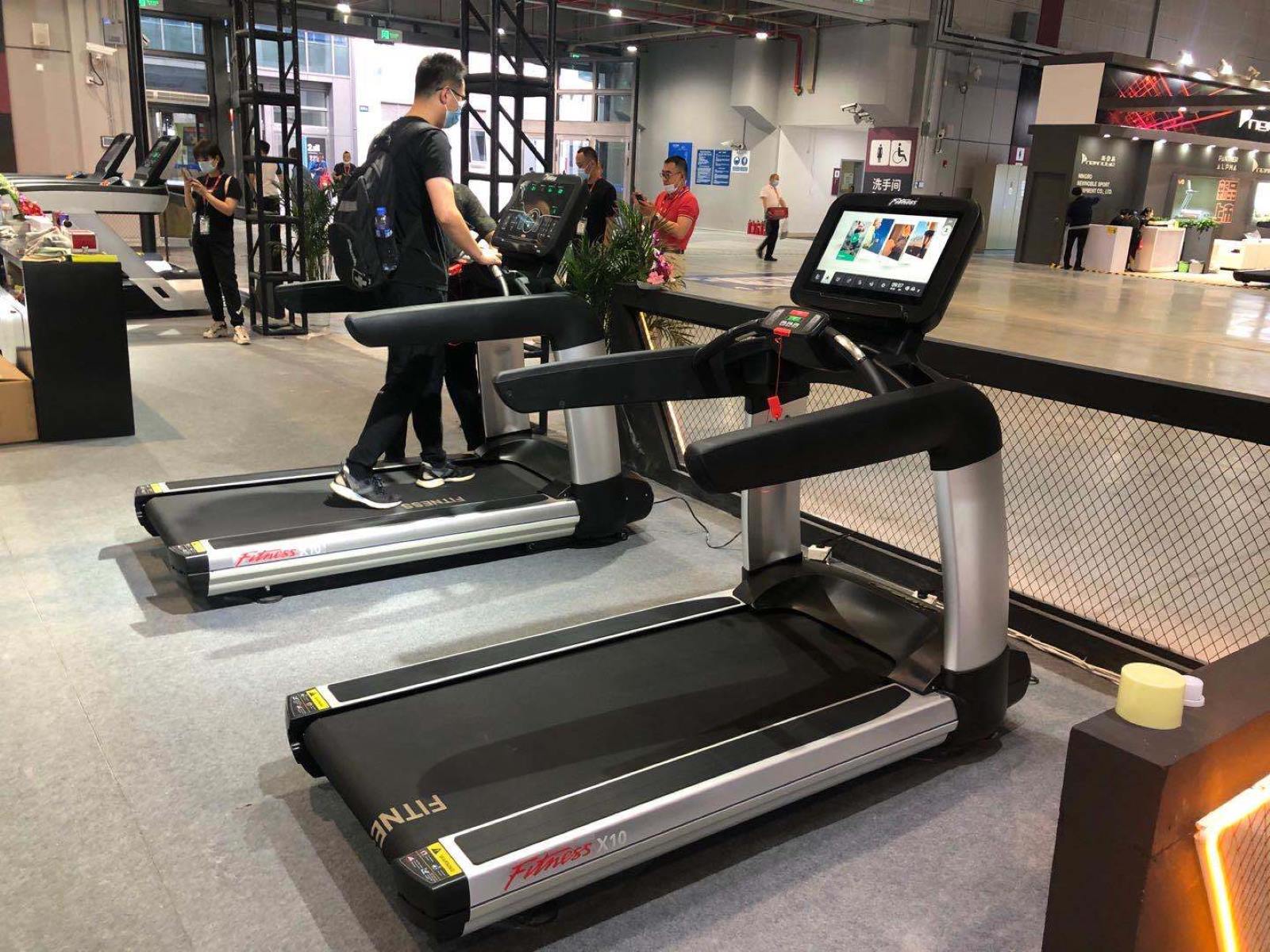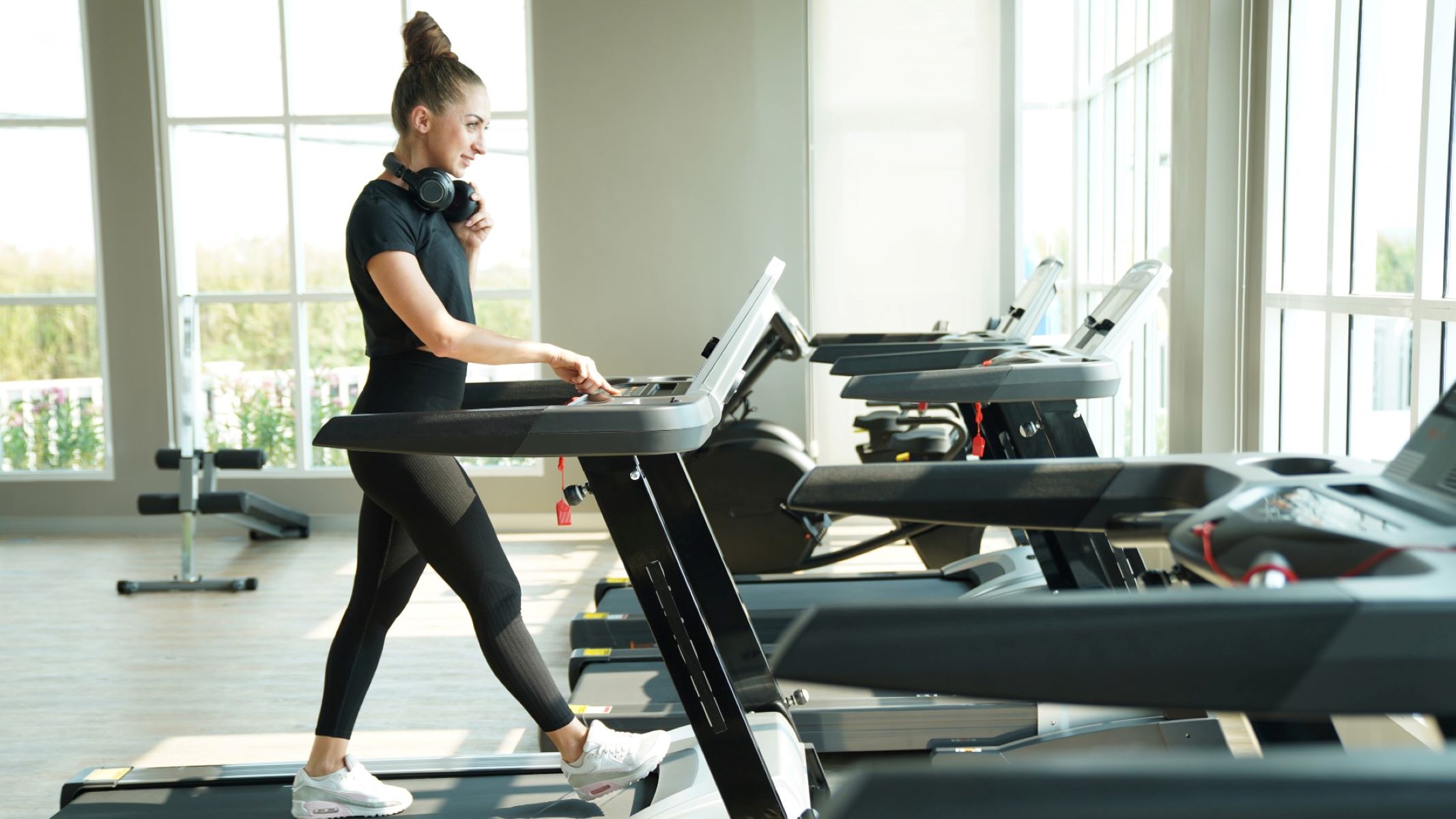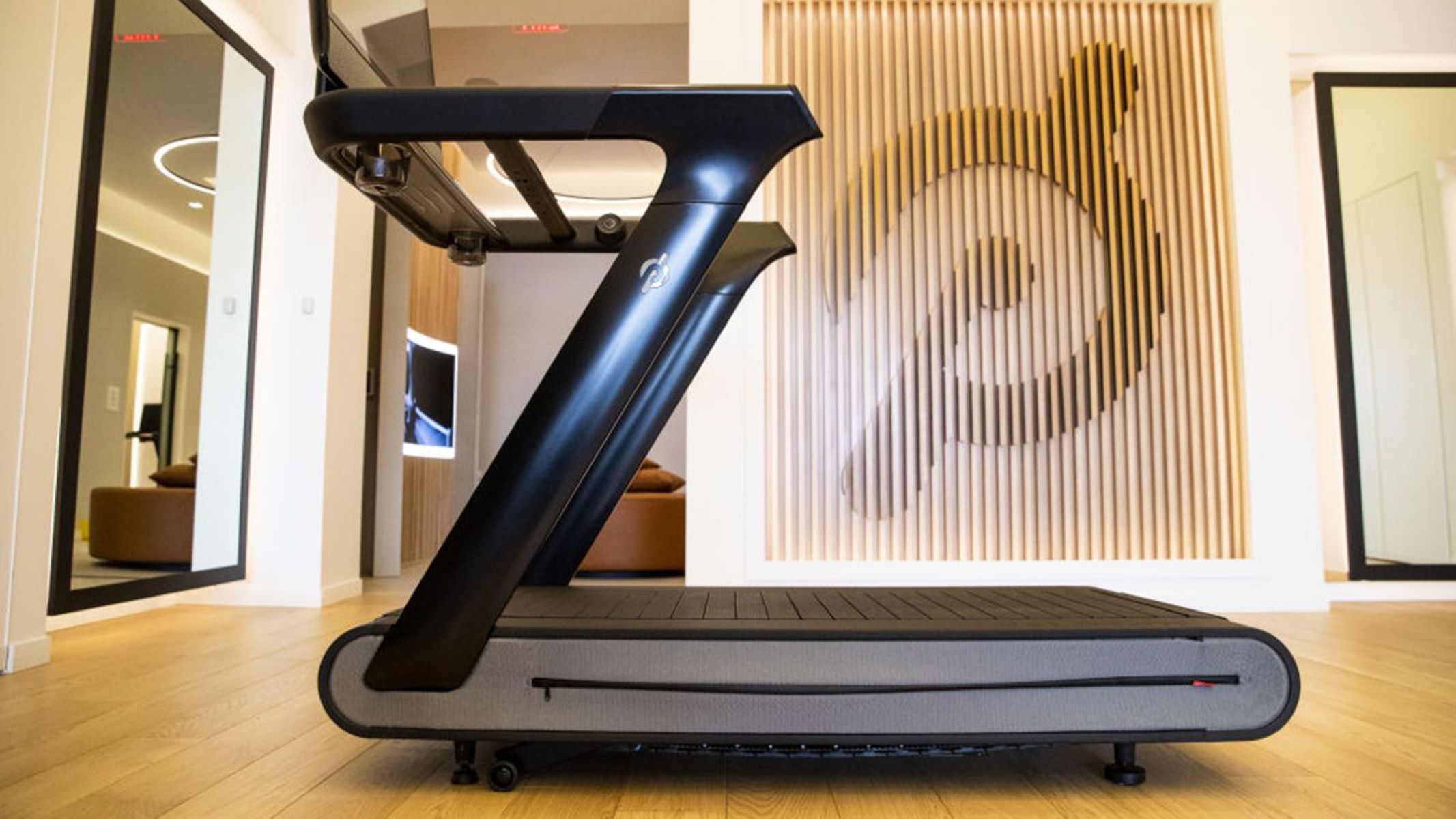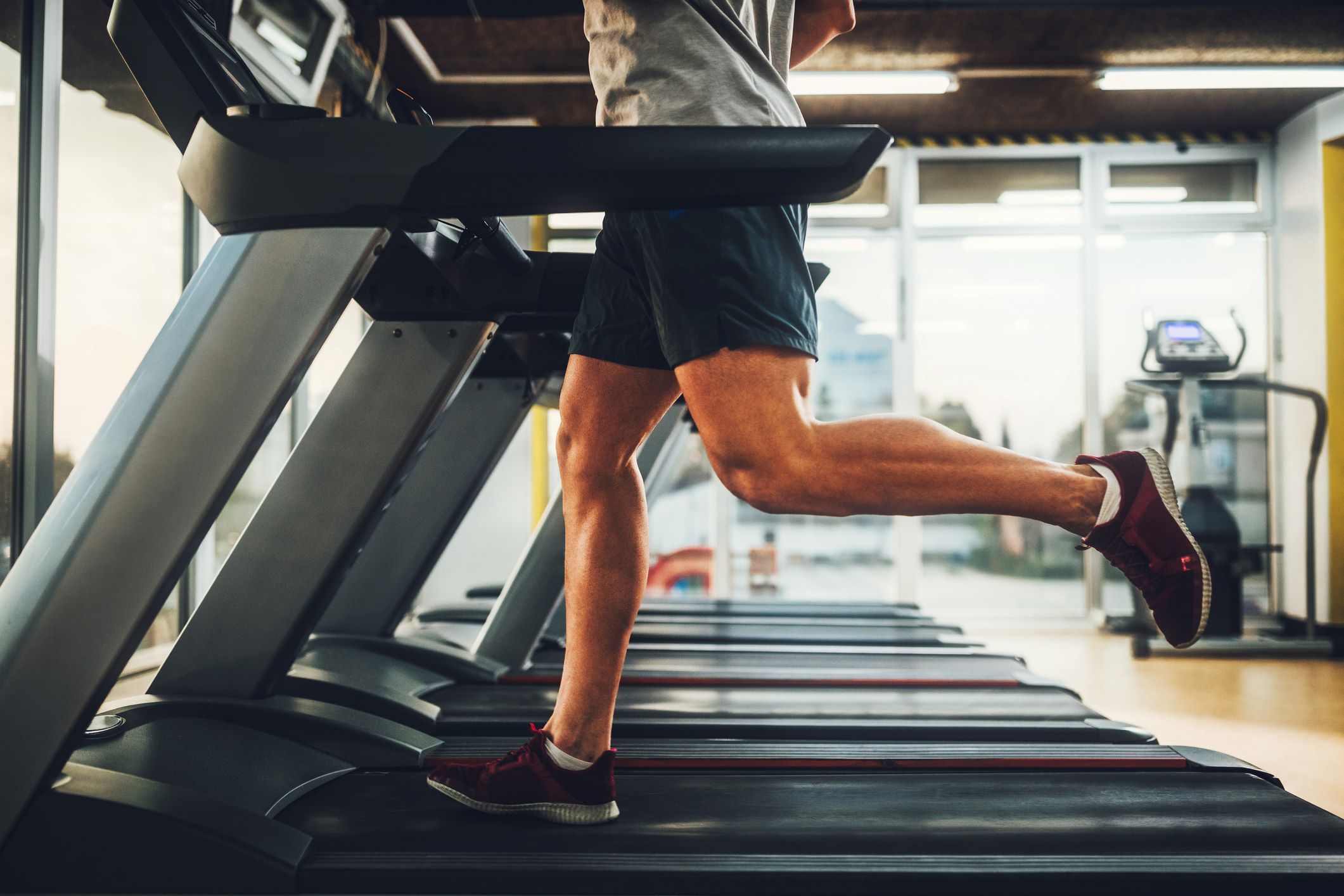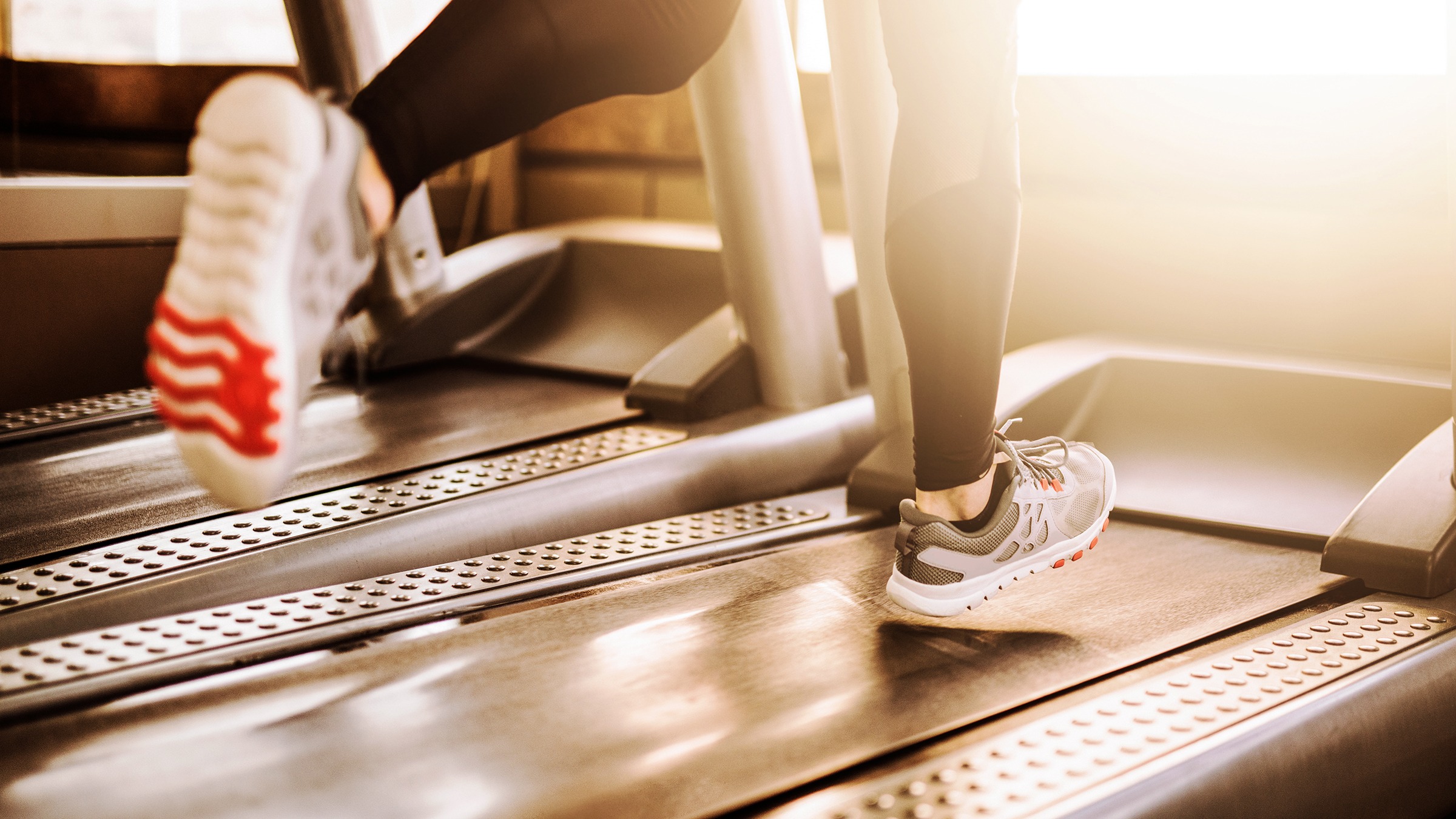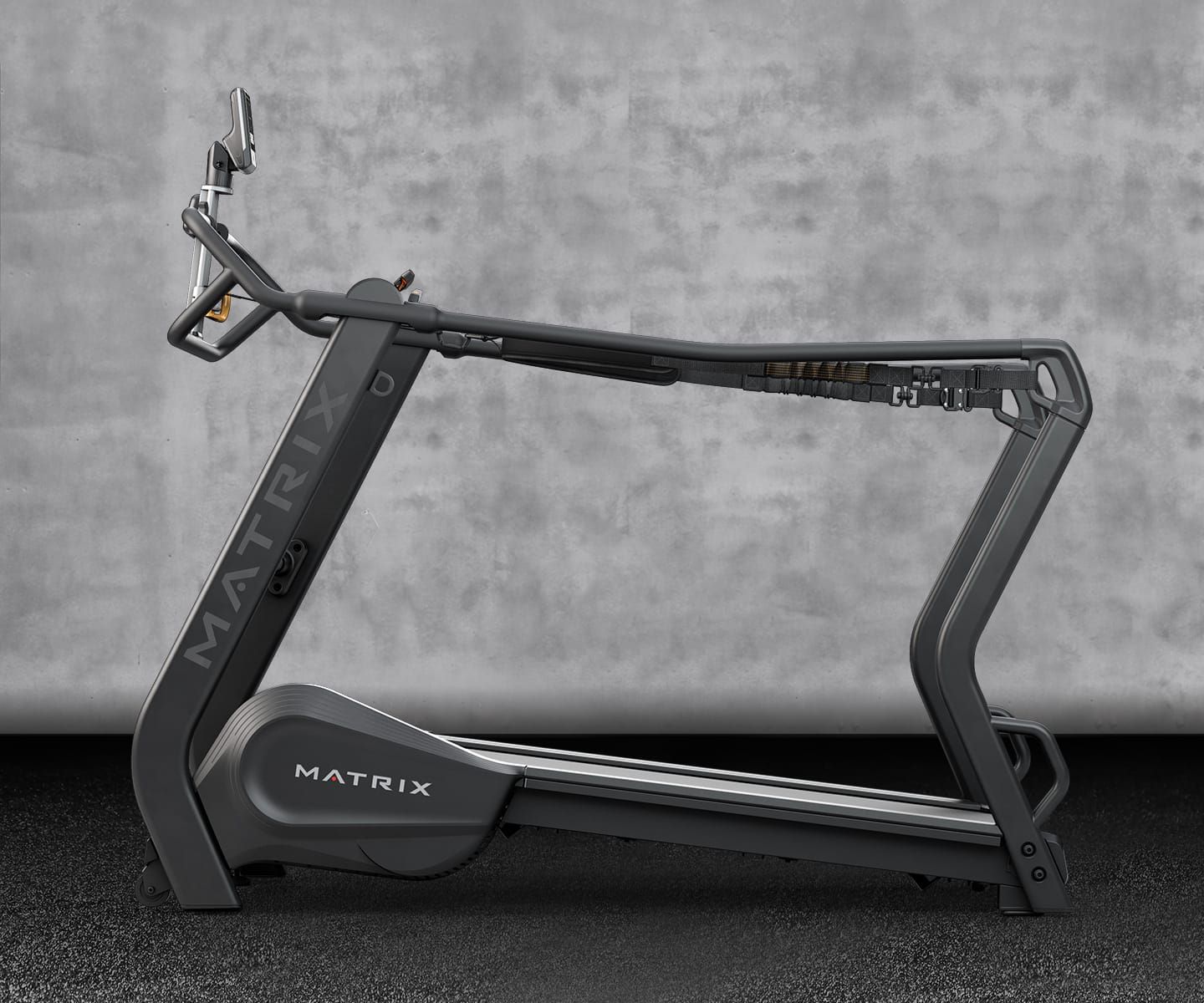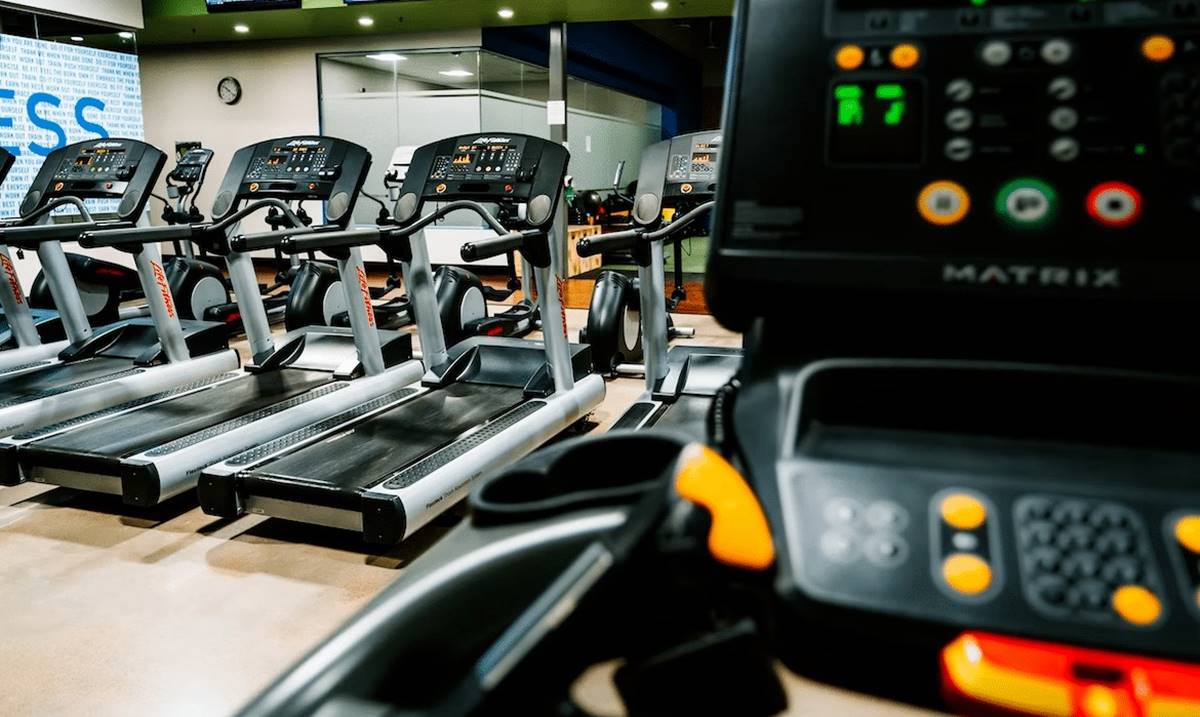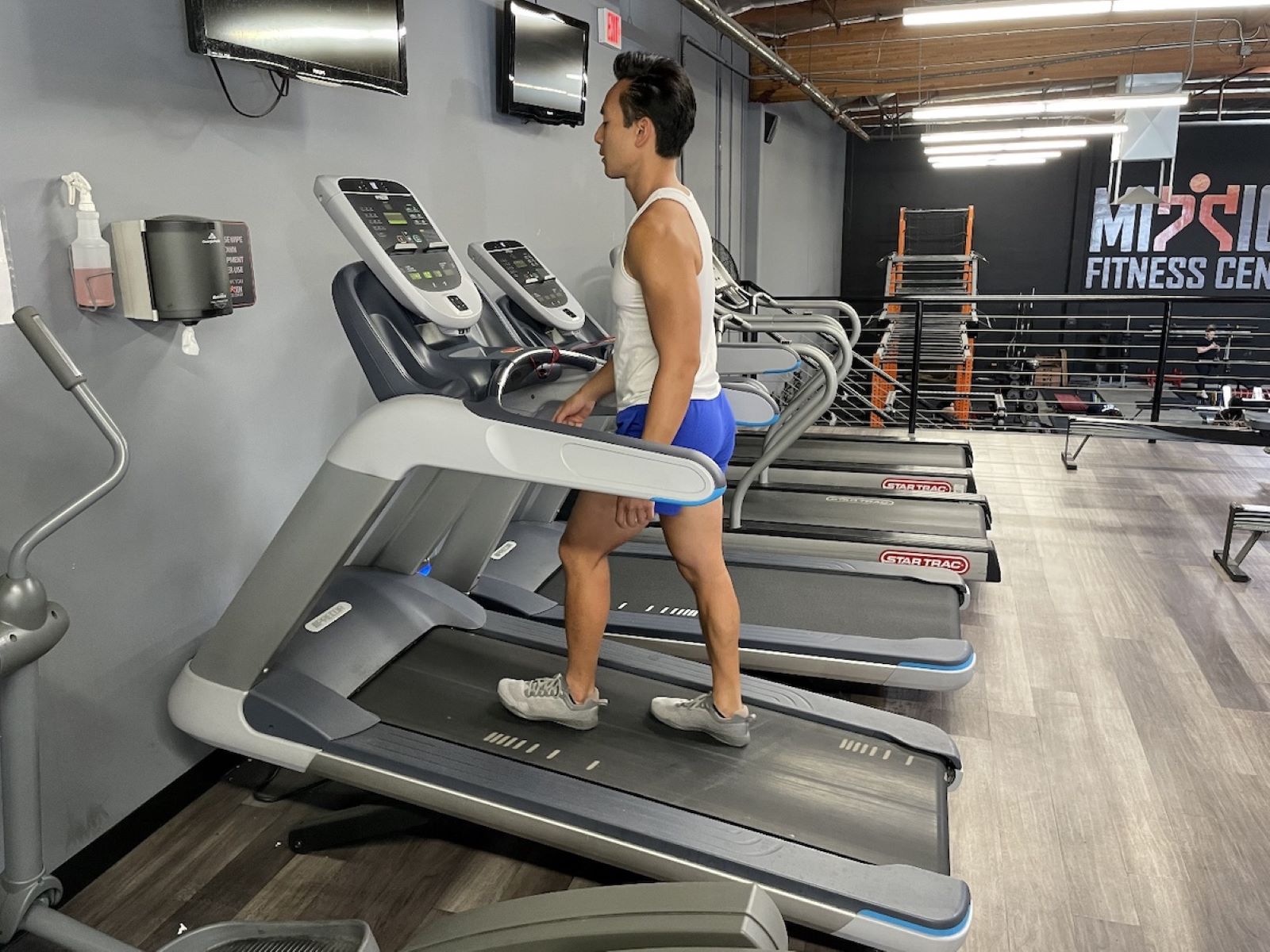

Featured
What Does An Incline Do On A Treadmill
Modified: January 2, 2024
Discover the benefits of using incline on a treadmill, including increased calorie burn and muscle engagement. Find out how our top featured treadmills can help you reach your fitness goals!
Introduction
When it comes to treadmill workouts, there are several features that can take your exercise routine to the next level. One of these features is the incline setting. If you’ve ever wondered what exactly the incline on a treadmill does and how it can benefit your workout, you’re in the right place.
Simply put, the incline feature on a treadmill refers to the ability to raise or lower the running surface. This allows you to simulate uphill or downhill running or walking, similar to the varied terrain you might encounter outdoors. While many people may prefer to keep the treadmill at a flat surface, understanding the advantages of using the incline feature can help you maximize your workout and achieve optimal results.
The incline feature on a treadmill can provide numerous benefits for both beginners and seasoned athletes alike. Not only does it add variety to your workout routine, but it also increases the intensity, challenges your muscles in different ways, and helps you burn more calories.
In this article, we’ll explore the various benefits associated with using the incline feature on a treadmill, discuss how it affects your workout, identify the specific muscle groups targeted, and provide some helpful tips and precautions for using this feature effectively.
Definition of an Incline on a Treadmill
An incline on a treadmill refers to the adjustable slope or elevation of the running surface. It allows you to simulate running or walking uphill, providing a challenging and dynamic workout experience. Most modern treadmills offer the ability to adjust the incline, allowing users to customize their workout based on their fitness level and goals.
The incline setting on a treadmill is typically measured in percentage or degrees. For example, a 5% incline means the running surface is elevated by 5% from the horizontal plane, while a 10-degree incline indicates a slope of 10 degrees from the flat surface. The degree of incline can vary depending on the treadmill model, ranging from a slight slope to a steep hill-like incline.
By adjusting the incline, you can mimic the resistance and cardiovascular demands of uphill running or walking without actually having to find a hilly outdoor terrain. This feature effectively adds intensity and variety to your workout, allowing you to target different muscle groups and increase the overall effectiveness of your treadmill exercise routine.
Modern treadmills often come equipped with quick incline buttons or pre-set programs that automatically adjust the incline at various intervals during your workout. This feature makes it easy to incorporate incline training into your routine, providing a seamless transition between flat running surfaces and uphill challenges.
It is important to note that not all treadmills offer incline functionality. If you are considering purchasing a treadmill, make sure to check if it includes this feature to fully benefit from the advantages of incline training.
Benefits of Using the Incline Feature
Using the incline feature on a treadmill offers a range of benefits that can enhance the effectiveness and efficiency of your workout. Incorporating incline training into your exercise routine can help you achieve your fitness goals faster and provide a more engaging and challenging experience. Here are some key benefits of using the incline feature:
- Burns More Calories: One of the major advantages of using the incline feature is that it increases the intensity of your workout. Running or walking uphill requires more effort from your muscles, resulting in a higher calorie burn. Research has shown that exercising on an incline can help you burn up to 50% more calories compared to exercising on a flat surface.
- Improves Cardiovascular Fitness: Running or walking uphill challenges your cardiovascular system, forcing your heart and lungs to work harder. This helps improve your cardiovascular endurance and strengthens your heart muscles.
- Tones and Strengthens Leg Muscles: Incline training specifically targets the muscles in your lower body, including your calves, quadriceps, hamstrings, and glutes. The increased resistance engages these muscles more effectively, helping to tone and strengthen them.
- Provides a Low-Impact Option: Incline training can be a great alternative for individuals who want to reduce the impact on their joints. Walking uphill puts less stress on your knees and reduces the risk of injury compared to running on flat surfaces.
- Simulates Outdoor Terrain: The incline feature allows you to simulate the varied terrain you might encounter outdoors. This can be particularly beneficial for those training for outdoor activities like hiking, trail running, or mountain climbing.
- Increases Workout Variety: Adding incline intervals or hill sprints to your treadmill workout routine adds variety and can help prevent boredom. The constantly changing intensity keeps your body and mind engaged, making your workouts more enjoyable and motivating.
By incorporating the incline feature into your treadmill workouts, you can enjoy these benefits and take your fitness journey to the next level. However, it is essential to understand how the incline feature affects your workout to make the most out of this training technique.
How the Incline Feature Affects Your Workout
The incline feature on a treadmill can significantly impact your workout routine by altering the intensity, muscle engagement, and overall effectiveness of your exercises. Understanding how the incline feature affects your workout can help you optimize your training and achieve your fitness goals. Here are some key ways in which the incline feature influences your workout:
- Increased Intensity: Utilizing the incline feature instantly increases the difficulty level of your workout. Running or walking uphill requires more effort from your leg muscles and cardiovascular system, resulting in a higher caloric expenditure and an elevated heart rate compared to exercising on a flat surface.
- Engages Different Muscle Groups: By adjusting the incline, you target different muscle groups in your lower body. Incline training emphasizes the work of your calves, quadriceps, hamstrings, and glutes, helping to improve strength and definition in these areas.
- Improved Cardiovascular Endurance: Working out on an incline challenges your cardiovascular system, forcing your heart and lungs to work harder. Over time, this leads to improved cardiovascular endurance and increased stamina.
- Enhanced Calorie Burn: Exercising on an incline requires more energy expenditure, resulting in a higher calorie burn. The increased effort and resistance demand more from your body, helping you shed excess weight and body fat more efficiently.
- Simulates Real-Life Terrain: The incline feature allows you to replicate real-life outdoor conditions, such as running uphill or walking on varied terrain. This can be particularly beneficial if you are training for a race or an outdoor activity where you will encounter hills or elevation changes.
- Boosts Overall Fitness: Incorporating the incline feature into your workouts challenges your body in new ways, promoting overall fitness gains. By regularly training on an incline, you can improve your strength, endurance, and cardiovascular fitness, leading to enhanced athletic performance.
It’s important to note that the intensity and incline level you choose should be appropriate for your fitness level and goals. Gradually increase the incline as you build strength and stamina to avoid overexertion or injury. By understanding how the incline feature affects your workout, you can make informed decisions and design workouts that meet your specific needs.
Muscle Groups Targeted with Incline Training
Incline training on a treadmill provides a unique opportunity to engage and target specific muscle groups in your lower body. The incline feature challenges these muscles by adding resistance and requiring increased effort. Here are the primary muscle groups targeted during incline training:
- Quadriceps: The quadriceps, located in the front of your thighs, are heavily engaged during incline training. The upward slope activates and strengthens these muscles as they work to push you uphill during each stride.
- Glutes: Your gluteal muscles, including the gluteus maximus, medius, and minimus, are activated during incline training. These muscles are responsible for hip extension and play a significant role in propelling you forward as you climb the incline.
- Hamstrings: The hamstrings, located in the back of your thighs, play a crucial role in incline training. These muscles work to bend your knees and assist in hip extension as you push against the resistance of the incline.
- Calf Muscles: The calf muscles, comprised of the gastrocnemius and soleus, are actively engaged during incline training. As you push off from the ground while climbing uphill, your calf muscles work to control ankle movement and provide propulsion.
- Hip Flexors: The hip flexor muscles, including the psoas major and iliacus, are activated during incline training. These muscles work to lift your knees and flex your hips as you move uphill, helping to maintain a fluid and powerful stride.
It’s important to note that incline training primarily targets the lower body muscles, particularly those in the thighs, glutes, and calves. To ensure a balanced workout, it’s recommended to incorporate additional exercises or activities that target the upper body and core muscles.
By regularly performing incline training, you can not only strengthen and tone these targeted muscle groups but also improve your overall lower body strength and endurance. It’s important to start with a manageable incline level and gradually increase the intensity as your fitness level improves.
Remember to always listen to your body and consult with a fitness professional if you have any concerns or questions regarding incline training or exercise in general.
Tips for Using the Incline Feature Effectively
Using the incline feature on a treadmill can be a powerful tool to elevate your workout routine. To make the most of this feature and maximize your results, consider the following tips for using the incline feature effectively:
- Gradually Increase the Incline: If you’re new to incline training, start with a lower incline setting and gradually increase it over time. This allows your body to adapt and adjust to the added intensity.
- Use Intervals: Incorporating interval training on the incline can be highly effective. Alternate between periods of higher inclines and lower inclines or flat surfaces to challenge your muscles and cardiovascular system.
- Maintain Proper Form: When using the incline feature, it’s crucial to maintain proper form. Keep your posture upright, engage your core muscles, and avoid leaning forward or backward excessively.
- Utilize Different Speeds: Experiment with different speeds while training on an incline. You can vary your pace by mixing short bursts of faster running or walking with periods of recovery at a slower pace.
- Combine with HIIT: High-Intensity Interval Training (HIIT) can be combined with the incline feature for a challenging workout. Alternate between high-intensity bursts of running or walking on an incline and short recovery periods.
- Add Resistance: Consider adding additional resistance to your workout routine by incorporating dumbbells or ankle weights to challenge your upper body or lower body muscles further during incline training.
- Pay Attention to Your Breathing: Focus on maintaining a controlled and steady breathing pattern throughout your workout. Proper breathing technique can help optimize your performance and endurance.
- Monitor Your Heart Rate: Keep track of your heart rate during incline training to ensure you’re working within your target heart rate zone. This will help you gauge the intensity of your workout and make adjustments as needed.
- Listen to Your Body: Always listen to your body and respect its limits. If you feel excessive strain or pain, decrease the incline or take a break. Pushing yourself is essential, but it’s equally important to avoid overexertion and injury.
Remember that everyone’s fitness level is different, so it’s essential to adjust the incline and intensity of your workouts according to your personal capabilities and goals. If you’re unsure about how to effectively use the incline feature, consider consulting a fitness professional who can guide you and provide personalized advice.
Precautions and Considerations When Using the Incline Feature
While using the incline feature on a treadmill can offer numerous benefits, it’s essential to take certain precautions and considerations to ensure your safety and maximize your workout experience. Here are some important things to keep in mind when using the incline feature:
- Start Slow and Listen to Your Body: If you’re new to incline training, begin with a gentle incline and gradually increase it over time. Pay attention to how your body feels and adjust the intensity or incline level accordingly.
- Warm Up Properly: Before starting your incline workout, ensure you warm up adequately. Perform dynamic stretches for your lower body and engage in a few minutes of light cardio to prepare your muscles for the increased intensity.
- Wear Appropriate Footwear: Make sure you wear proper athletic shoes with good cushioning and support. This will help reduce the impact on your joints and provide stability while climbing the incline.
- Maintain Proper Posture: It’s vital to maintain proper posture while training on an incline. Keep your head up, shoulders relaxed, and engage your core muscles to ensure proper alignment and reduce the risk of strain or injury.
- Avoid Holding onto the Handrails: While it may be tempting to hold onto the handrails for support, try to avoid this as much as possible. Holding onto the handrails reduces the engagement of your lower body muscles and may lead to improper form and decreased workout effectiveness.
- Stay Hydrated: Remember to stay hydrated during your workouts, especially when using the incline feature. Drink water before, during, and after exercise to maintain proper hydration levels and prevent dehydration.
- Gradually Increase Intensity: Over time, as your fitness level improves, you can gradually increase the intensity and duration of your incline workouts. However, avoid overexertion and always give your body adequate rest and recovery.
- Consult a Professional if Necessary: If you have any specific health concerns, pre-existing conditions, or are unsure about how to safely incorporate the incline feature into your workout routine, consult with a qualified fitness professional or healthcare provider for guidance.
Remember, safety should always be a priority when using any exercise equipment, including the incline feature on a treadmill. By taking these precautions and considerations into account, you can ensure a safe and effective workout experience while reaping the benefits of incline training.
Conclusion
The incline feature on a treadmill is a powerful tool that can greatly enhance your workout routine. By adjusting the slope of the running surface, you can target specific muscle groups, increase the intensity of your workouts, and achieve a more well-rounded fitness experience.
Using the incline feature offers a range of benefits, including increased calorie burn, improved cardiovascular fitness, and the opportunity to simulate outdoor terrain. Additionally, incline training engages key muscle groups such as the quadriceps, glutes, hamstrings, and calves, helping to strengthen and tone your lower body.
To use the incline feature effectively, it’s crucial to start at a manageable level, progressively increase the intensity, and maintain proper form. Incorporating intervals, adding resistance, and monitoring your heart rate can further enhance your workouts. Remember to listen to your body, warm up properly, and stay properly hydrated throughout your incline training sessions.
While the incline feature can be a valuable addition to your fitness routine, it’s important to consider any necessary precautions and consult with professionals if needed. By following these guidelines, you can make the most of the incline feature on a treadmill and take your workouts to new heights.
So, next time you step on a treadmill with the incline feature, embrace the challenge, engage your muscles, and enjoy the benefits of incline training for a more effective and rewarding workout.
